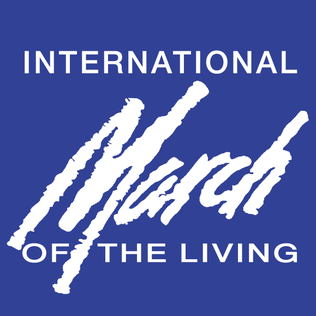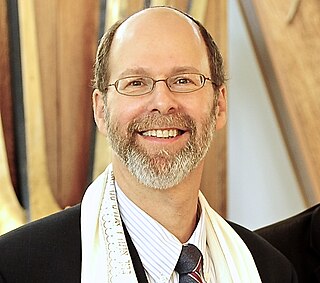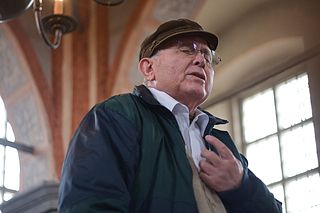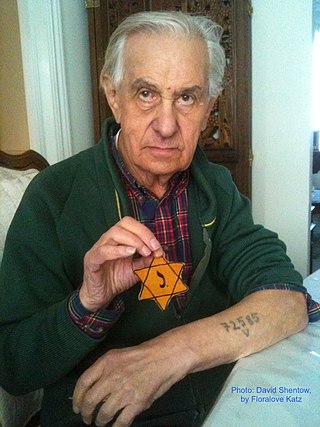
Nazi Germany used six extermination camps, also called death camps, or killing centers, in Central Europe during World War II to systematically murder over 2.7 million people – mostly Jews – in the Holocaust. The victims of death camps were primarily murdered by gassing, either in permanent installations constructed for this specific purpose, or by means of gas vans. The six extermination camps were Chełmno, Belzec, Sobibor, Treblinka, Majdanek and Auschwitz-Birkenau. Extermination through labour was also used at the Auschwitz and Majdanek death camps. Millions were also murdered in concentration camps, in the Aktion T4, or directly on site.

Majdanek was a Nazi concentration and extermination camp built and operated by the SS on the outskirts of the city of Lublin during the German occupation of Poland in World War II. It had seven gas chambers, two wooden gallows, and some 227 structures in all, placing it among the largest of Nazi concentration camps. Although initially intended for forced labor rather than extermination, it was used to murder people on an industrial scale during Operation Reinhard, the German plan to murder all Polish Jews within their own occupied homeland. In operation from 1 October 1941 to 22 July 1944, it was captured nearly intact. The rapid advance of the Soviet Red Army during Operation Bagration prevented the SS from destroying most of its infrastructure, and Deputy Camp Commandant Anton Thernes failed to remove the most incriminating evidence of war crimes.
This is a selected bibliography and other resources for The Holocaust, including prominent primary sources, historical studies, notable survivor accounts and autobiographies, as well as other documentation and further hypotheses.
The Holocaust has been a prominent subject of art and literature throughout the second half of the twentieth century. There is a wide range of ways–including dance, film, literature, music, and television–in which the Holocaust has been represented in the arts and popular culture.

The March of the Living is an annual educational program which brings students from around the world to Poland, where they explore the remnants of the Holocaust. On Holocaust Memorial Day observed in the Jewish calendar, thousands of participants march silently from Auschwitz to Birkenau.

Sigmund Sobolewski was a Polish Catholic Holocaust survivor and activist. He was the 88th prisoner to enter Auschwitz on the first transport to the concentration camp on June 14, 1940, and remained a prisoner for four and a half years during World War II. He was an opponent of Holocaust denial and was notable as a non-Jewish victim and witness who confronted neo-Nazis, antisemites and Holocaust deniers. His life and memories as a survivor are recounted in Prisoner 88: The Man in Stripes by Rabbi Roy Tanenbaum.

The March of Remembrance and Hope (MRH) is a program designed for university and college students of all religions and backgrounds. The program takes place in mid-May, and includes a two-day trip to Germany, followed by a five-day visit to Poland. The international MRH program was founded in 2001 by Dr. David Machlis of the United States and Eli Rubenstein of Canada, both of whom were involved in the March of the Living (MOL) program.

The Auschwitz-Birkenau State Museum is a museum on the site of the Auschwitz concentration camp in Oświęcim, Poland.
"Lay Down Your Arms" is a peace song originally in Hebrew language as תפילה לשלום composed by the Israeli Doron B. Levinson in 1973 in the aftermath of Yom Kippur War when Levinson was temporarily blind at the time, having been injured during the war. The Hebrew lyrics are by Hamutal Ben Zeev-Efron. The song is a tribute to a fallen Israeli soldier. The lyrics written by Hamutal Ben Zeev-Efron are inspired by the Isaiah (2:4) that says "And they shall beat their swords into ploughshares and their spears into pruning hooks; nation shall not lift up sword against nation, neither shall they teach their children war anymore".
Congregation Habonim Toronto, founded in 1954, is a liberal reform synagogue located at 5 Glen Park Avenue in Toronto, Ontario, Canada, and one of the first Holocaust refugee/survivor congregations to develop in Canada. Although currently independent of any official denomination, its early founders modeled the synagogue on the example of early Reform Judaism in Germany.

Holocaust tourism is tourism to destinations connected with the extermination of Jews during the Holocaust in World War II, including visits to sites of Jewish martyrology such as former Nazi death camps and concentration camps turned into state museums. It belongs to a category of the so-called 'roots tourism' usually across parts of Central Europe, or, more generally, the Western-style dark tourism to sites of death and disaster.

Witness: Passing the Torch of Holocaust Memory to New Generations is a large format volume, published by Canadian Second Story Press, inspired by a 2014 United Nations exhibit of reflections and images of Holocaust survivors and students who have traveled on the March of the Living since 1988. The exhibit and the book are intended to educate a new generation of students about the atrocities of the Second World War. In collaboration with March of the Living, an organization that spearheads visits to the Polish grounds where Nazi atrocities occurred, Toronto religious leader and Holocaust educator Eli Rubenstein compiled this book which includes an introduction from Pope Francis.

The March of the Living Digital Archive Project, begun in 2013, aims to gather Holocaust testimony from Canadian survivors who have participated in the March of the Living. Since 1988, Holocaust survivors have traveled to Poland with young students on the March of the Living to share their Holocaust stories in the locations they transpired.

Eli Rubenstein is a Holocaust educator, writer, and filmmaker. He is currently the religious leader of Congregation Habonim Toronto, a Toronto synagogue founded by Holocaust survivors.

Pinchas Gutter is a Holocaust educator and frequent guest lecturer for the Sarah and Chaim Neuberger Holocaust Centre and the March of the Living and March of Remembrance and Hope programs. He is one of the pioneers of an innovative project called Dimensions in Testimony in which a life-sized interactive biography will be wheeled into classrooms, lecture halls and museums. The idea is that the audience asks questions and pre-recorded statements from the video Gutter will respond – much as if talking to the real person. Gutter has also been the subject of a number of films by directors such as Fern Levitt, Eli Rubenstein, Stephen D. Smith and Zvike Nevo.

David Shentow was a Belgian-Canadian Holocaust survivor and educator, featured in Canadian films, books and articles. He received the Queen Elizabeth II Diamond Jubilee Medal in 2012, and the Sovereign's Medal for Volunteers in 2017. For "extraordinary community service to the citizens of the City of Ottawa, the Province of Ontario and Canada", the "David Shentow Park" was unveiled by Mayor Jim Watson on 11 September 2022.
Ella Blumenthal is a Polish Holocaust survivor. In 1940, she was moved to the Warsaw Ghetto, where she participated in the Warsaw Ghetto Uprising. She and her niece Roma Rothstein were the only members of their immediate family to survive the Holocaust. She is the subject of the 2021 documentary I am Here.

Witnesses in Uniform is a program according to which the delegations made of soldiers and veterans of the Israeli Defense Forces, members of the Israel Police and other uniformed services, and family members of the fallen soldiers are sent to Poland to commemorate the Holocaust and learn about it. It usually includes a Holocaust survivor who tells their story and guides from Yad Vashem. The delegations visit Nazi death camps, as well as synagogues, cemeteries, memorials, to learn about the pre-war Jewish history, and the historical background to the Nazi's "Final Solution" to the Jewish question.

Edward Mosberg was a Polish-born American Holocaust survivor, educator, and philanthropist. During the Holocaust, he was held by the Nazis from 14 years of age in Kraków Ghetto, Kraków-Płaszów concentration camp, Auschwitz concentration camp, Mauthausen concentration camp, and a slave labor camp in Linz, Austria, that was liberated by the US Army in 1945. Nearly all of his family were murdered in the Holocaust.
Fern Levitt is a Canadian-born documentary producer and director. Her films focus on human rights, the Holocaust, discrimination against African-Americans in the US, and animal welfare. She is best known for her 2016 documentary Sled Dogs, which aired on the CBC Documentary channel. It explores the Iditarod, raising allegations of animal cruelty among breeders, trainers and kennelers of the event's sled dogs.















